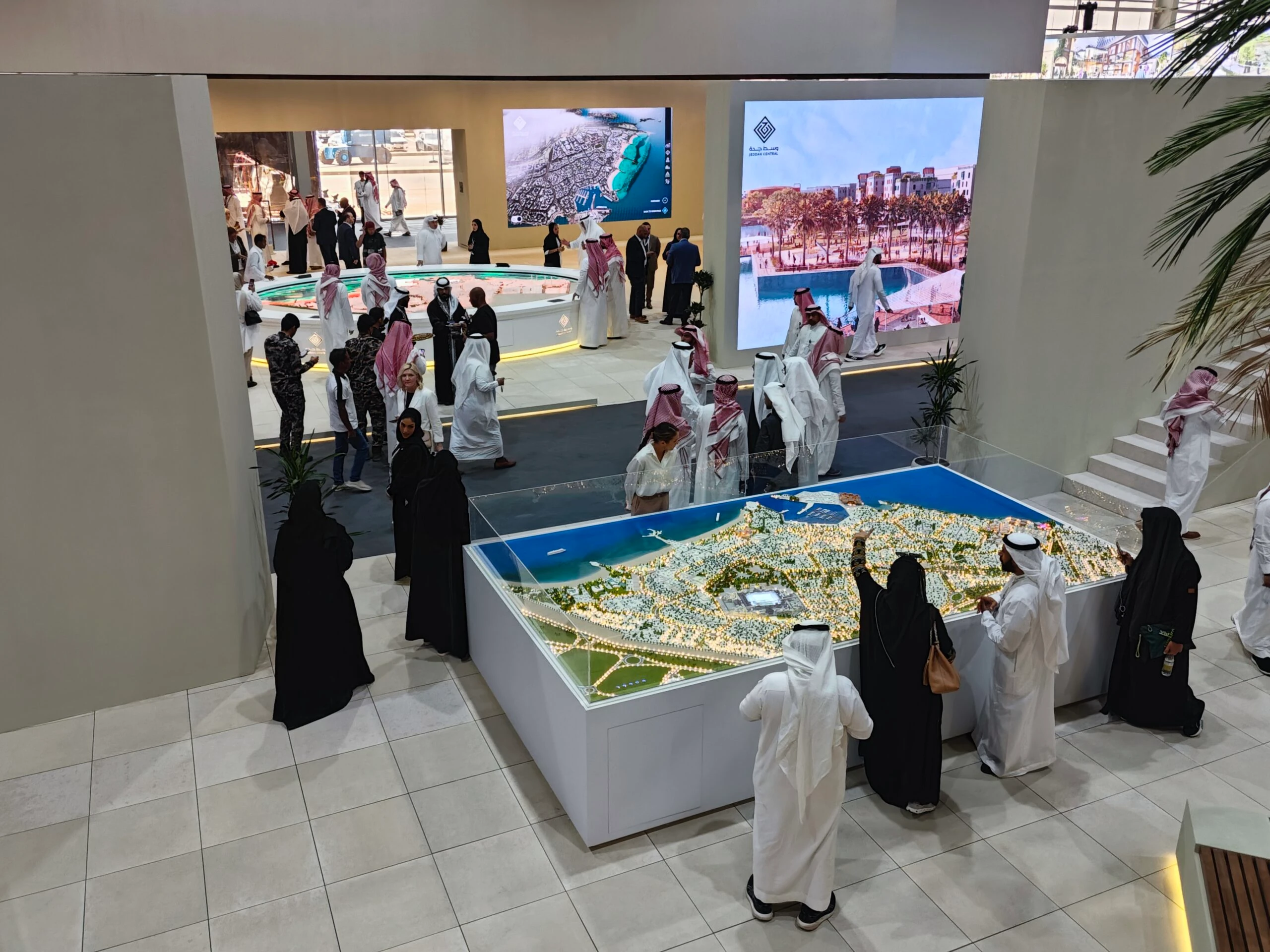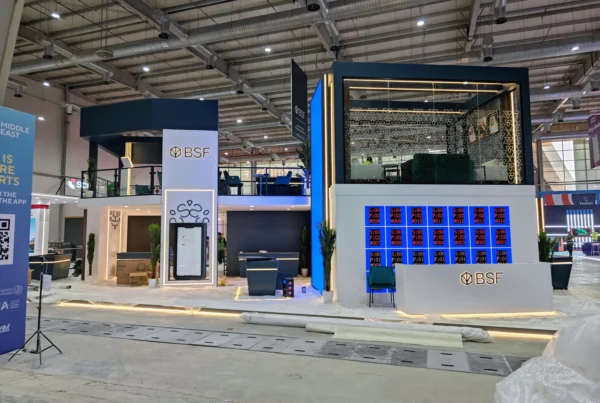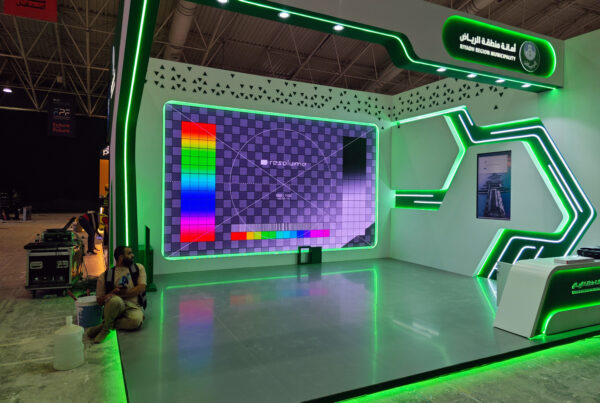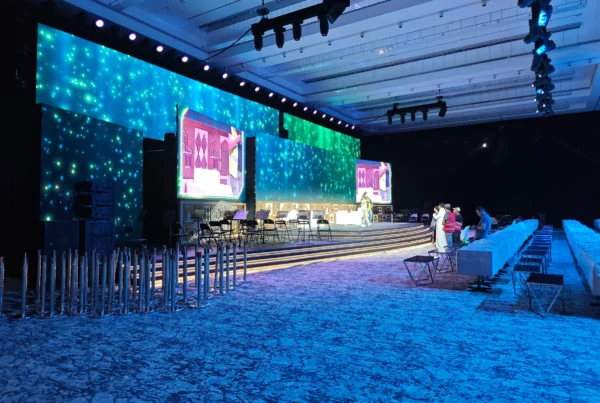Real estate marketing has long relied on in-person tours, physical models, and static renderings. Yet as buyer expectations evolve and markets expand globally, new approaches are essential for forging deeper emotional connections and prompting faster commitments. Enter digital twin technology—highly detailed virtual replicas of physical properties—and the power of event-like interactivity that transforms marketing from passive viewing to immersive storytelling. By 2025, this synergy stands poised to redefine how developers, investors, and potential homeowners connect with projects, bridging geographical gaps and spurring earlier sales.
This article explores how merging digital twins with event-focused immersive strategies provides an elevated digital interactive experience. Whether you’re a real estate developer seeking to pre-sell units more effectively or an event organizer looking to broaden your scope, these tactics can fundamentally reshape property engagement while driving ROI.
1. The Evolution of Digital Twins: More Than a Virtual Model
1.1 What Digital Twins Bring to Real Estate
A digital twin is more than a 3D rendering. As explained by Deloitte’s report on digital twins in real estate, it’s a dynamic, data-driven model that mirrors a building or urban development in real time, linking design files, sensor data, and operational metrics. The Digital Twin Market Size, Share, Industry Trends Report 2030 (MarketsandMarkets) projects the global digital twin market could reach USD 110.1 billion by 2028, underscoring the swift growth and cross-industry uptake.
In real estate, digital twins allow stakeholders—developers, investors, buyers—to explore a property’s design and potential in detail, often before construction commences. They can visualize spatial layouts, lighting conditions, and future amenities, resulting in a significantly improved decision-making process and stronger emotional engagement. This approach can accelerate marketing cycles for off-plan projects, as noted in How Digital Twin Technology is Transforming Real Estate Sales.
1.2 Why the Real Estate Sector Needs an “Event-Like” Touch
While digital twins offer vivid virtual replicas, bridging the “experience gap” requires more than static visuals. Incorporating event-like immersive elements—such as interactive technology, live storytelling, AR/VR capabilities—injects excitement and fosters audience participation. By adapting techniques honed in the events industry (interactive booths, multi-user VR, sensor-driven personalization), real estate developers can make property tours more memorable, encouraging buyers to commit earlier.
Live events have long used immersive experiences to generate brand loyalty. Similarly, real estate can benefit from a mini “trade show booth” within the digital twin—complete with guided experiences, personal interactions, and real-time analytics. This is where synergy emerges: combining the robust detail of a digital twin with the user-centric engagement strategies typical of event experiences.
2. Converging Digital Twins and Event-Like Interactivity
2.1 Beyond 3D: Embedding Immersive Event Technologies
A typical property tour might feature a virtual slideshow or static 3D model. However, adopting an event-like approach means integrating augmented reality (AR), virtual reality (VR), or gesture-based interactions, letting potential buyers literally “walk” through a project from any location. As explained in Immersive Interactive Technology for Events: The Key to Memorable Brand Experiences, immersive solutions deeply engage audiences by making them feel like active participants, not passive viewers.
2.2 Recreating the “Live Event” Energy
Adding live chat features, AI avatars, or multi-user VR sessions can replicate the buzz of an event. Buyers might explore a high-rise’s 20th floor condo in VR while interacting with a virtual brand ambassador who can respond to questions in real time. Return on Events: New Metrics for Now — and Into the Future (PCMA) emphasizes how event ROI grows when participants are actively involved rather than just watching. This principle equally applies to potential homeowners or investors evaluating a property from across the globe.
2.3 Cross-Benefits: Real-Time Updates and Feedback
Because digital twins can be updated with IoT sensor data or design changes, “events” surrounding a property are no longer one-off occurrences. They can evolve continuously—like an ongoing expo hall open to global audiences 24/7, facilitating new marketing opportunities and repeated visits as building phases progress.
3. Technical Foundations: Building an Interactive Digital Twin
3.1 Real-Time Engines & 3D Modeling
Engines like Unreal or Unity provide the photorealistic environments crucial for modern digital twins. They render large-scale projects seamlessly, enabling dynamic lighting, interactive elements, and smooth VR/AR integrations. As Future Trends: UE5.5, GeForce GTX 5000, and the Next Wave of Digital Twin for Real Estate and Events highlights, hardware advancements in GPUs can manage the complexity of large datasets without compromising performance.
3.2 Sensor Integration & Data Streams
For existing structures or advanced pre-sales, IoT devices (measuring lighting, energy consumption, occupant flow) can feed real-time data into a twin, making property tours more realistic. This data can also support “event-like” experiences, such as an AR-driven demonstration of how daylight changes across seasons or how facility usage spikes at peak hours.
3.3 AI and Personalization
Adapting user experiences on the fly calls for AI-driven user profiling or facial/gesture recognition. The hyper-personalization approach detailed in Hyper-Personalization: Tailoring the 2025 Digital Interactive Experience to Each Attendee offers real-time transformations—like presenting customized home finishes to a prospective buyer. For event-like synergy, AI chatbots might replicate on-site brand ambassadors, guiding visitors to relevant floors or features based on their stated preferences.
4. Use Cases: Merging Digital Twins with Event Approaches
4.1 Off-Plan Development Showcases
A developer launching a new multi-tower project could host a “global unveiling event” in VR. Prospects sign in from anywhere, stepping into a unified virtual environment that mirrors the property’s final vision. Like attending a live event, participants can gather in a virtual lobby, watch a keynote about the development, then “tour” apartments or offices in small groups—each guided by an AI assistant or real-time agent. As a result, pre-sales accelerate, particularly if the event fosters an atmosphere of limited-time offers or unique early-access perks.
4.2 Ongoing Site Tours at Expos
Real estate expos typically require expensive physical booths. By fusing digital twin models with interactive sessions, developers can replicate full building experiences at smaller physical stands with VR stations or AR tablets. This approach was exemplified in Jeddah Central Development Company Digital Twin Project and Riyadh Digital Twin: A New Dimension in Urban Visualization, where large-scale urban developments were presented in an interactive, visually striking manner to stakeholders.
4.3 Continuous Engagement & Property Updates
A digital twin environment doesn’t have to be restricted to a one-time marketing push. With live event-like updates—such as monthly reveals of newly completed floors, or theme-based promotions (e.g., a “green living expo” focusing on eco-friendly aspects)—developers keep audiences engaged, fostering an extended brand relationship. This cyclical approach encourages repeated site visits, generating consistent buyer interest.
5. ROI and Business Outcomes
5.1 Accelerated Sales Cycles and Reduced Costs
By removing geographic hurdles and offering immersive exploration, buyers commit earlier. They see where an apartment’s balcony faces, or how a future retail space might be laid out, diminishing the need for repeated in-person visits. Deloitte’s Digital Twins in Real Estate – Humanizing Buildings in the Age of Technology confirms that digital twins significantly lower operational costs and enhance design precision—benefits that scale further when integrated into immersive event experiences.
5.2 Expanded Market Reach
With event-like online showcases, developers tap into global investor pools. A prospective buyer from London can join a VR tour unveiling a high-rise in Dubai, guided as though they’re physically present. This convenience fosters cross-border sales and investor confidence—a critical factor in fast-growing, internationally oriented property markets.
5.3 Enhanced Brand Image and Stakeholder Engagement
Tech-forward marketing strategies position a company as innovative. Investors and stakeholders appreciate advanced previews, while end-users enjoy richer experiences. As the Return on Events: New Metrics for Now — and Into the Future (PCMA) notes, focusing on engagement yields strong brand resonance, an advantage that real estate companies can exploit by pairing digital twins with event-like flair.
6. Building a Strategy: Best Practices for Implementation
6.1 Align Stakeholders Early
To effectively merge digital twin visuals and event staging, real estate developers, marketing teams, event organizers, and technology specialists must sync from day one. Clarify goals: Are you aiming to pre-sell units, gain municipal approvals, or spotlight sustainability features?
6.2 Start with Pilot Demonstrations
Before adopting a city-scale twin or an entire complex, pilot a partial digital twin (like one building floor or an “event booth” version of the property). Gather user feedback, test concurrency limits, and measure buyer interest. This approach mitigates risks and collects data for future expansions.
6.3 Optimize for User Experience
Ensure intuitive navigation, stable performance, and clear user instructions. Attendees at a VR expo or buyers exploring a 3D environment should never feel overwhelmed by interface complexities. Referencing Immersive Interactive Technology for Events underscores how simplicity in design fosters deeper, more natural engagement.
6.4 Leverage AI for Real-Time Adaptations
In corporate events, advanced analytics help tailor session recommendations. The same logic can adapt property tours on the fly. If a user focuses on high-end finishes, the system spotlights premium packages. If they show more interest in cost-saving, it might demonstrate minimalistic, eco-friendly designs. For more on AI’s potential, see AI Takes Center Stage: How 2025’s AI Revolution Will Transform the Digital Interactive Experience.
6.5 Foster Ongoing Engagement
Like major events that expand digitally over time, real estate marketing can integrate monthly themed “pop-up experiences” in the digital twin environment—unveiling newly completed amenities or special promotional zones. This cyclical model keeps prospects intrigued while the development progresses in real life.
7. Challenges, Privacy, and Ethical Considerations
7.1 Data Collection & Usage
Capturing occupant analytics or user gestures demands transparency. In immersive events, disclaimers about tracking physical motion or emotional responses can preserve trust. In property contexts, clarifying how prospective buyer data is stored and used is equally vital.
7.2 Technical Complexity
Merging VR/AR event solutions with high-fidelity digital twins is no minor feat. Real-time engines must handle large polygon counts, potentially large concurrency, and dynamic changes (like lighting or occupant simulations). Edge or cloud computing might be necessary to ensure smooth user experiences.
7.3 Financial Feasibility
Large-scale digital twin + event synergy can be costly initially. Strategies to manage budgets may include renting VR hardware for short “virtual launches,” using open standards or modular expansions, and systematically measuring ROI from smaller trial runs.
8. Real-World Examples & Case Studies
8.1 Jeddah Central Development: Medium-Scale Interactive Twin
The Jeddah Central Development Company Digital Twin Project demonstrates how an interactive 3D environment showcased the scope and design features of a developing urban center. By layering event-like elements—such as guided presentations or VR tours—the project captured investor interest and streamlined decision-making.
8.2 Riyadh Digital Twin: Large-Scale Urban Visualization
In Riyadh Digital Twin: A New Dimension in Urban Visualization, event-based user engagement was integrated with advanced 3D modeling, allowing stakeholders to “experience” city planning data in a dynamic setting akin to attending a specialized expo. Municipalities, developers, and investors could collaboratively refine city blocks, seamlessly bridging the real and the virtual.
8.3 Hybrid Conference Real Estate Fair
Imagine a real estate fair that merges in-person stands with a digital twin environment accessible online. Remote visitors can explore the same interactive models as on-site attendees—combining live Q&A, AR demos, or short keynote presentations with building exploration. Such synergy ensures worldwide participation, fueling earlier leads and property bookings.

9. Future Outlook: Where Digital Twin & Event Immersion Converge
9.1 AI-Powered Personalization & Metaverse-Like Platforms
As AI becomes more predictive, property tours might adapt in real time to user preferences. Potential buyers with an interest in eco-friendly layouts might see more greenery or solar installations. Expanding on broader immersive worlds, real estate developers could maintain permanent VR “worlds” for investors to revisit.
9.2 Persistent “Digital Twin Events”
What if a property showcase were less of a one-time unveiling and more of a continuous “event platform”? Regular updates (building progress, seasonal design changes) create repeated marketing cycles, keeping prospective buyers engaged across an entire project timeline.
9.3 Enhanced Interoperability
To attract maximum ROI, ensuring the digital twin can integrate with event or marketing platforms is essential. Using standardized data formats or APIs fosters collaboration among real estate dev teams, event planners, and technology partners.
Conclusion & Next Steps
Combining digital twin real estate models with event-like immersion yields powerful digital interactive experiences that elevate user engagement and catalyze earlier sales. By incorporating VR/AR, multi-user sessions, and AI-driven personalization, real estate marketing transforms from passive observation into active co-creation—allowing prospects to “feel” a property long before it’s built.
For successful integration:
- Clarify Goals: Are you promoting off-plan units, raising investment, or facilitating design approvals?
- Select Robust Tech: Evaluate advanced 3D engines, real-time analytics, and possibly IoT data to feed your digital twin.
- Pilot, Then Scale: Begin with partial or single-building showcases, measure results, and expand in phases.
- Ensure Data Transparency: Disclose how you track or store user behaviors—be it in VR expos or occupant analytics.
- Iterate & Innovate: Use feedback loops to refine the experience and keep content fresh across your building’s lifecycle.
Adopting these guidelines can reshape real estate sales strategies, bridging distances and fueling immersive interactions that shorten sales timelines. For more insight or customized solutions, consider reaching out to Chameleon Interactive—where we blend digital twin technology with immersive event flair to produce next-generation property tours that captivate audiences worldwide.
FAQ: Fusing Digital Twins with Immersive Solutions
1. How do digital twins enhance traditional real estate marketing?
Digital twins offer photorealistic 3D models of properties—often before construction—enabling buyers to explore layouts, finishes, and amenities virtually. By integrating immersive “event-like” elements, these tours become more interactive and emotionally compelling, sparking earlier commitment.
2. Can digital twin solutions really replace physical property showrooms and expos?
They can’t fully replace face-to-face experiences, but they can dramatically reduce the need for multiple site visits. By hosting “virtual events” inside digital twins, developers can showcase properties to global audiences, maintaining a live, collaborative feel reminiscent of trade shows.
3. Why is event-style immersion important in real estate?
Borrowing from the events industry—such as interactive kiosks, AR/VR stations, or guided presentations—infuses real estate previews with a sense of excitement. This engaging ambiance fosters deeper buyer involvement and a more memorable brand encounter.
4. What ROI benefits can we expect from merging digital twins and event-like features?
Developers often see accelerated sales cycles, reduced marketing costs, and broader investor pools. Immersive “live” engagements typically lead to higher attendee satisfaction and stronger emotional connections, translating into quicker deals and positive word-of-mouth.
5. How should I start implementing these immersive strategies for my property listings?
Begin with pilot-scale projects—for instance, a limited digital twin environment or a VR demo booth—then gather feedback on user engagement. Build from there, ensuring seamless integration with your overall marketing plan and maintaining clear data governance for any user metrics you collect.


